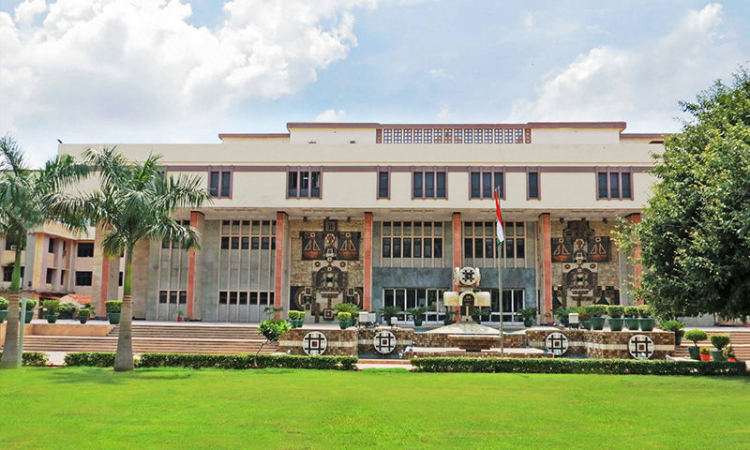- Home
- /
- High Courts
- /
- Delhi High Court
- /
- Sales Tax Subsidy/Incentive Is...
Sales Tax Subsidy/Incentive Is Capital Receipt: Delhi High Court
Mariya Paliwala
31 Jan 2024 9:00 PM IST
The Delhi High Court has held that the sales tax subsidy or incentive received by the assessee under the Dispersal of Industries Package of Incentives, 1993, was a capital receipt.The bench of Justice Rajiv Shakdher and Justice Girish Kathpalia has observed that the common thread running through various incentives provided under the scheme was the setting up of a new unit or...
The Delhi High Court has held that the sales tax subsidy or incentive received by the assessee under the Dispersal of Industries Package of Incentives, 1993, was a capital receipt.
The bench of Justice Rajiv Shakdher and Justice Girish Kathpalia has observed that the common thread running through various incentives provided under the scheme was the setting up of a new unit or large-scale investment in fixed capital. The fact that the eligibility certificate was to be issued by the agency implementing the scheme after the commencement of commercial production by the eligible unit appears to have been incorporated in the 1993 Scheme to ensure that the object and purpose of the 1993 Scheme, which was to industrialize underdeveloped and developing areas, were fulfilled.
The respondent or assessee has obtained the benefit from the Government of Maharashtra, which is a sales tax subsidy in the manner and form prescribed under the scheme titled Dispersal of Industries Package of Incentives, 1993.
The issue raised was whether the sales tax subsidy received by the assessee is a capital receipt or a revenue receipt.
The Government of Maharashtra, to achieve the dispersal of industries outside the Bombay, Thane-Pune belt and to incentivise the setting up of new and expanded units in underdeveloped and developing areas had in 1964, forged a scheme titled “Package Scheme of Incentives”.
The Package Scheme of Incentives introduced in 1964 underwent changes from time to time. The 1993 Scheme, is rooted in the Package Scheme of Incentives put in place by the Government of Maharashtra in 1964.
Seeking to take advantage of the 1993 scheme, the assessee set up industrial units in Butibori, Nagpur, and Takhalghat, Nagpur. The production in the Butibori unit commenced on May 1, 1994, while in the expanded Takhalghat unit, it commenced on September 1, 1996.
Upon an application being made, the assessee was issued two eligibility certificates by the State Industrial and Investment Corporation of Maharashtra Limited (SICOM).
The respondent/assessee filed its Return of Income for AY 1997–98, in which it declared a loss amounting to Rs. 205,02,97,503. The respondent or assessee was subjected to a scrutiny assessment. The assessing officer passed an order in which the loss declared by the assessee was scaled down.
In the appeal preferred by the assessee with the Commissioner of Income Tax (Appeals) (CIT(A)), the order passed by the AO was reversed. Thus, CIT(A), in effect, accepted the loss, as declared by the respondent or assessee in its ROI.
The appellant or department approached the Income Tax Appellate Tribunal against the order passed by the CIT (A). The assessee lodged cross-objections with the Tribunal regarding the issue concerning the sales tax subsidy.
The department contended that the 1993 scheme was a production-linked incentive scheme that kicked in only after the eligible unit had commenced production. Although the main objective of the 1993 Scheme was to disperse industries outside the Bombay Thane-Pune belt, the eligibility certificate was issued once commercial production had commenced. Significantly, the 1993 scheme did not envisage land grants or interest-free capital. Under the 1993 Scheme, the eligible units were those that, among other things, possessed the land, registrations from different governmental bodies, and industrial licenses declaring the commencement of commercial production. The requirements were captured in the 1993 Scheme under the sub-headings "Initial Effective Steps” and “Final Effective Steps." The 1993 scheme improved liquidity by providing sales tax incentives. It did not provide for any direct or indirect payment for setting up the industrial unit. The sole purpose of the 1993 Scheme was to alleviate hardship and handhold such industrial units.
The assessee contended that merely the fact that the sales tax subsidy under the 1993 Scheme was received based on the eligibility certificate issued after the commencement of the production would not render the receipt as one on the capital account.
The assessee, while ascertaining the nature of the sales tax subsidy received by the assessee, had to employ the “purpose test." If the purpose is ascertained, which, under the 1993 Scheme, was to both disperse and attract industries to underdeveloped and developing areas of the state, the manner and the point at which the assessee received the sales tax subsidy were of little relevance. Merely the fact that the sales tax subsidy under the 1993 Scheme was received based on the eligibility certificate issued after the commencement of the production would not render the receipt as one on the capital account.
The court disposed of the appeal by answering in favour of the assessee and against the department.
Counsel For Appellant: Shailendera Singh
Counsel For Respondent: Ajay Vohra
Case Title: Commissioner Of Income Tax Versus M/S Indo Rama Textiles Ltd.
Citation: 2024 LiveLaw (Del) 118
Case No.: ITA 392/2014


